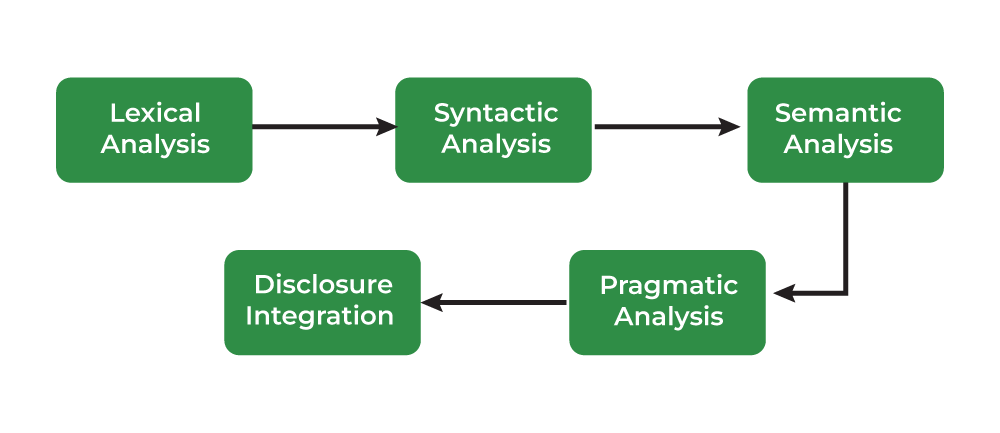Natural Language Processing (NLP) Tutorial
Last Updated :
23 Jul, 2025
Natural Language Processing (NLP) is a branch of Artificial Intelligence (AI) that helps machines to understand and process human languages either in text or audio form. It is used across a variety of applications from speech recognition to language translation and text summarization.
Natural Language Processing can be categorized into two components:
1. Natural Language Understanding: It involves interpreting the meaning of the text.
2. Natural Language Generation: It involves generating human-like text based on processed data.
Phases of Natural Language Processing
It involves a series of phases that work together to process and interpret language with each phase contributing to understanding its structure and meaning.
 Phases of NLP
Phases of NLPFor more details you can refer to: Phases of NLP
Libraries for NLP
Some of natural language processing libraries include:
Normalizing Textual Data in NLP
Text Normalization transforms text into a consistent format improves the quality and makes it easier to process in NLP tasks.
Key steps in text normalization includes:
1. Regular Expressions (RE) are sequences of characters that define search patterns.
2. Tokenization is a process of splitting text into smaller units called tokens.
3. Lemmatization reduces words to their base or root form.
4. Stemming reduces works to their root by removing suffixes. Types of stemmers include:
5. Stopword removal is a process to remove common words from the document.
6. Parts of Speech (POS) Tagging assigns a part of speech to each word in sentence based on definition and context.
Text Representation and Embedding Techniques in NLP
Lets see how these techniques works in NLP.
Text representation Techniques
It converts textual data into numerical vectors that are processed by the following methods:
Text Embedding Techniques
It refers to methods that create dense vector representations of text, capturing semantic meaning including advanced approaches like:
1. Word Embedding
2. Pre-Trained Embedding
3. Document Embedding
4. Advanced Embeddings
Deep Learning Techniques for NLP
Deep learning has revolutionized Natural Language Processing by helping models to automatically learn complex patterns from raw text.
Key deep learning techniques in NLP include:
Pre-Trained Language Models
Pre-trained models can be fine-tuned for specific tasks:
Natural Language Processing Tasks
Core NLP tasks that help machines understand, interpret and generate human language.
1. Text Classification
3. Sentiment Analysis
4. Machine Translation
5. Text Summarization
6. Text Generation
Natural Language Processing Chatbots
NLP chatbots are computer programs designed to interact with users in natural language helps in seamless communication between humans and machines. By using NLP techniques, these chatbots understand, interpret and generate human language.
Applications of NLP
- Voice Assistants: Alexa, Siri and Google Assistant use NLP for voice recognition and interaction.
- Grammar and Text Analysis: Tools like Grammarly, Microsoft Word and Google Docs apply NLP for grammar checking.
- Information Extraction: Search engines like Google and DuckDuckGo use NLP to extract relevant information.
- Chatbots: Website bots and customer support chatbots leverage NLP for automated conversations.
For more details you can refer to: Applications of NLP
Importance of NLP
Natural Language Processing (NLP) plays an important role in transforming how we interact with technology and understand data. Below are reasons why it’s so important:
- Information Extraction: Extracts useful data from unstructured content.
- Sentiment Analysis: Analyzes customer opinions for businesses.
- Automation: Streamlines tasks like customer service and document processing.
- Language Translation: Breaks down language barriers with tools like Google Translate.
- Healthcare: Assists in analyzing medical records and research.
For more details you can refer to: Why is NLP important?
